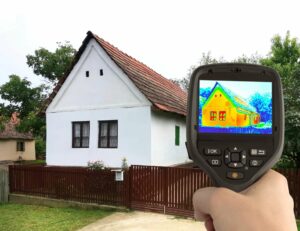When it’s time to replace your residential windows and doors, the aesthetic nature is definitely a top priority. However, you’ll also want to ensure that you choose windows and doors that offer superior energy efficiency. That’s why you’ll want to look for their energy rating information. The better the energy efficiency is, the most cost-effective your windows will be. You’ll spend less on utility bills to keep your home comfortable year-round, and you’ll also be doing your part to minimize your carbon footprint and support the environment.
Understanding the Energy Star Label
Products that feature the Energy Star label have met certain qualifying criteria for energy efficiency. When you choose residential windows with the Energy Star label, you can feel confident knowing they have:
- Been manufactured by an Energy Star partner
- Been independently tested and certified by the National Fenestration Ratings Council (NFRC)
- Have an NFRC rating that is aligned with the guidelines of the U.S. Environmental Protection Agency (EPA)
For windows, the Energy Star label consists of a blue panel on the left-hand side and a map of the U.S. on the right-hand side. You should check the map to see if your state is highlighted in yellow. If so, that means the window meets the standards for energy efficiency in your climate zone. Some windows may meet the standards for energy efficiency in all 50 states. In these cases, the entire map will be yellow. The Energy Star label for doors may look slightly different, but the general concept is the same. If your state is highlighted on the small map of the U.S., then the door meets the energy efficiency standards.
Deciphering the NFRC Label
The Energy Star label is helpful for determining, at a quick glance, the energy rating of a product. However, it doesn’t get into the details of the product. For that, you’ll need to check out the NFRC label. You’ll find the NFRC label located next to the Energy Star label. This label lists the U-factor, solar heat gain coefficient, visible transmittance, and air leakage ratings.
- U-factor: This value measures the rate of heat loss. This value will generally fall between 0.20 and 1.20. Here, you’ll want to choose a lower number. A very low U-factor rating indicates a highly energy-efficient residential window.
- Solar heat gain coefficient: Residents of sunny Arizona will want to pay close attention to the solar heat gain coefficient. It measures the efficiency of the product in blocking heat from the sun. This value will be between zero and one. Again, you’ll want to choose a low number for maximum energy efficiency.
- Visible transmittance: This rating doesn’t relate to heat loss or gain, but rather to visible light. Thus, the higher this number is, the more daylight your windows will let in and the less you’ll spend on lighting. Visible transmittance values range from zero to one.
- Air leakage: As the name suggests, this rating measures the rate of air leakage through the product. A low number is ideal for preventing drafts. This value ranges from 0.1 to 0.3.
Considering the Role of Window Orientation
There are a few other factors you can consider besides the Energy Star and NFRC labels. Before you go shopping for residential windows, make a note of which windows face which directions. In the warmer climates like Arizona, the windows that face the south, east, and west should ideally have very low solar heat gain coefficient ratings. Along with this rating, you should prioritize selecting products with a low U-factor, since this can reduce your cooling costs.
Crandell Glass & Aluminum is a leading provider of window replacement services in the greater Tucson area. Our experienced team is committed to professionalism, affordability, and outstanding customer service. Call us today at (520) 512-5042 to discuss your residential window replacement project.

